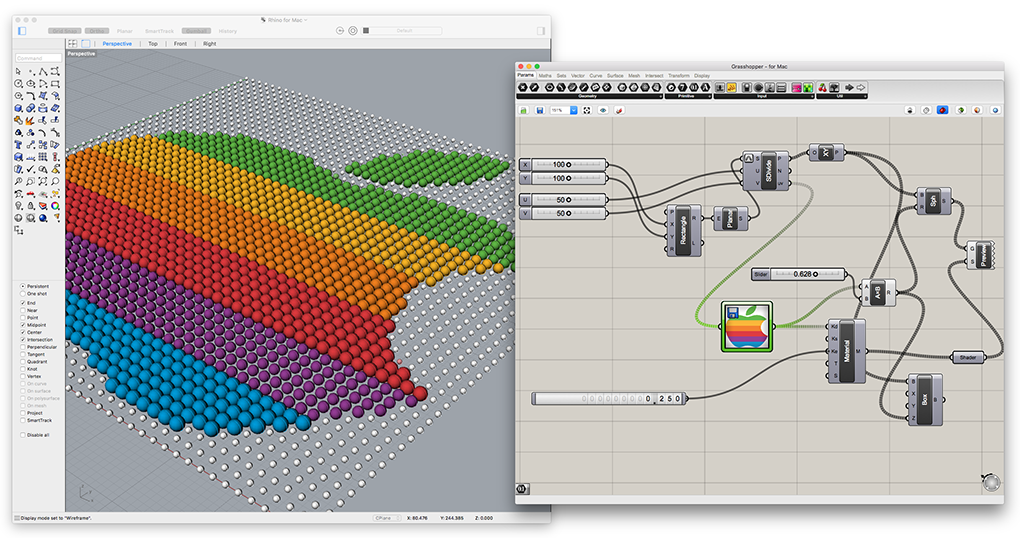
This documentation helps to understand how to work with the plugin for Rhinoceros for Mac. What do I need to know to use the plugin? Note that the Maxwell plugin for Rhinoceros for Mac does not have the same functionality as the version for Windows. Therefore, we are also including Maxwell Studio as a complement in case you need to access all the features that Maxwell offers. For information on how to work with Studio, please check this link: We'll keep evolving the plugin trying to add as many features as we can in order to provide the best workflow possible. System Requirements The plugin requires a minimum of Mac OSX 10.9 and Rhino for Mac 5.2.2.
Demokratia hudshaya forma pravleniya cherchillj esse. Frequently Asked Questions -- Rhino for Mac These are some of the most Frequently Asked Questions (and answers!) about Rhino for Mac. If your question is not answered here, please visit our Rhino for Mac forum and see if it has already been answered there.
Installation To install the plugin, follow these steps: • Double-click the plugin's.dmg file. • Inside, double-click the maxwell_rhino.macrhi file.
• Rhino will start, and will install the plugin. • Restart Rhino.
The standard Rhino installation location for the plugin (in case it should be necessary to start Maxwell applications from outside the plugin) is: /Users//Library/Application Support/McNeel/Rhinoceros/MacPlugIns/maxwell_rhino.rhp The maxwell_rhino.rhp file is a bundle, which contains the plugin files, its included Maxwell applications, and related support files. To open it, right-click and choose Show Package Contents.

Toolbar The plugin's toolbar (which may be shown or hidden using Window > Active Tool Palettes > Maxwell) contains six buttons. Button Description Render Export the model to MXS format and render the file in Maxwell Render.
Export to Studio Export the model to MXS format and open it in Maxwell Studio. Open MXED Start Maxwell MXED; if an object is selected, an MXM file named for its material will be created (or opened, if it already exists). Camera Set Maxwell camera properties for the currently-active viewport. Environment Set Maxwell environment properties. Output Set MXS output properties. Rendering and Export When the Render or Export to Studio buttons are pressed, the plugin will translate the model to Maxwell's MXS format, and either render the written MXS file, or open it in Maxwell Studio. The location of the exported MXS is controlled using Output > Output Directory; if no path is set here, the MXS will be written next to the.3dm file (or in /Maxwell, if the document has not yet been saved).
If any warnings or errors are generated during the export, they will be reported in the Rhino command log. See the main documentation for more information on. Maxwell MXED and Materials When using this plugin, you will have to assign Rhino materials. At render time, the plugin will look for Maxwell materials with the same name as the ones assigned to the geometry; if a Maxwell material with a matching name is not found, the Rhino materials will be automatically converted to a Maxwell version. List naruto shippuden download naruto shippuden mkv 3gp mp4 sub indo free. The plugin will look for those Maxwell materials in a folder called 'textures' next to the scene file. This is why it is important to save the Rhino.3dm scene into a particular folder since the beginning. If you click the MXED button when you have an object selected, the assigned Rhino material will be translated to a Maxwell version; if you then click on save and close, an mxm material with the same name will be created inside the 'textures' folder.
When a Rhino material's corresponding MXM file is created, it will be based on a translation of the Rhino material; similarly, Maxwell materials will be generated during export, for any Rhino materials that lack associated MXM files. • So, it is recommended to save your scene in a specific folder, as all associated mxm materials will be created inside a 'texture' folder next to it. • Inside Rhino you only assign Rhino native materials and you can use them to place textures and adjust them in viewport. • When you launch a render from the plugin, Maxwell will look for mxm materials that have the same name as native Rhino materials assigned in a folder called 'textures' next to the Rhino file and replace these with Maxwell ones. • If you have an object selected and click the purple icon, the material will be converted to a Maxwell version and a new mxm material will be created when you click Save and close button; It will have the same name as Rhino material assigned to that object and will be stored in the 'textures' folder. • If there is already an mxm material with the same name, it will be opened for edition. • Finally, if you move the scene to a different folder, remember to take all the materials (texture folder) with the scene.